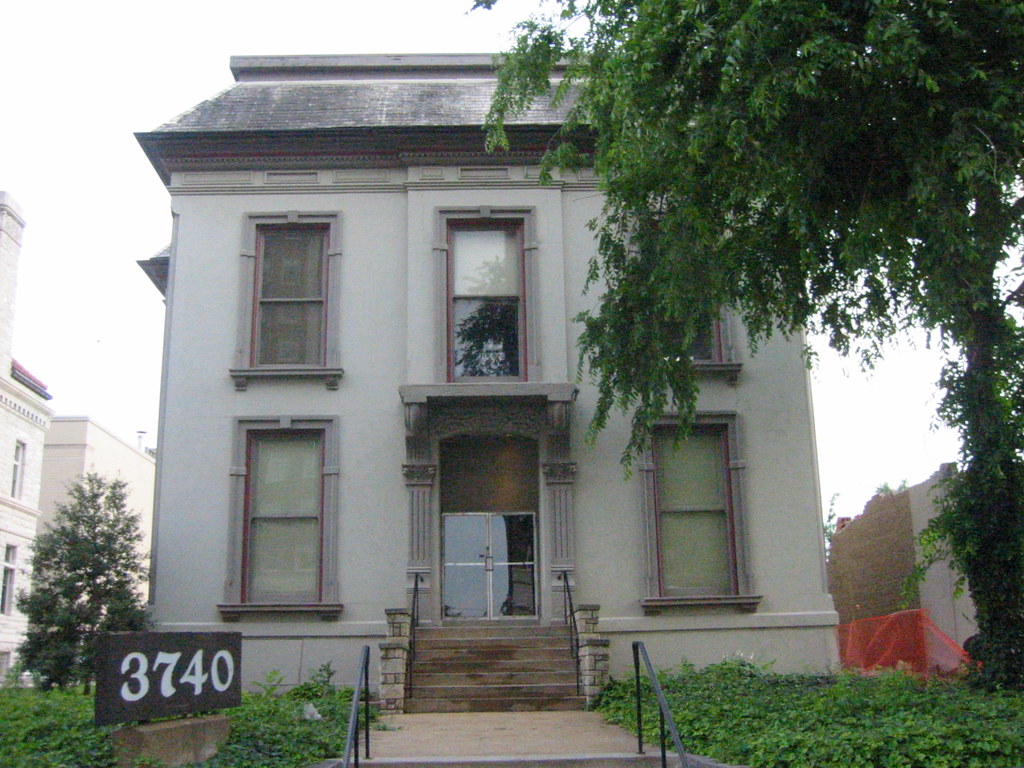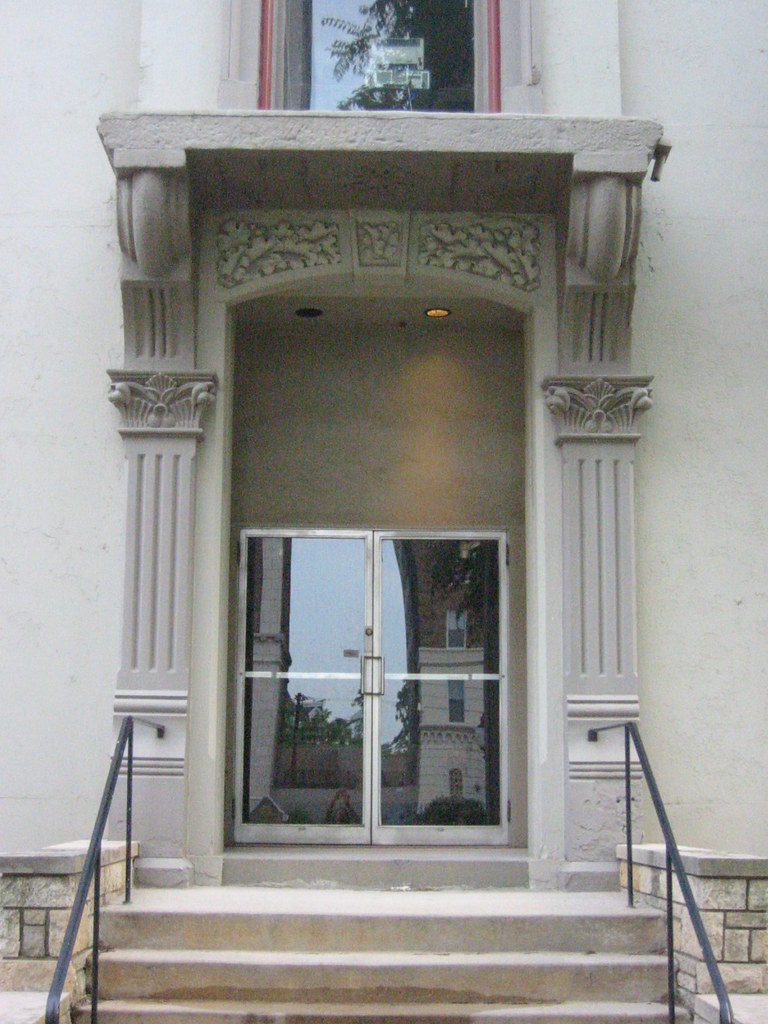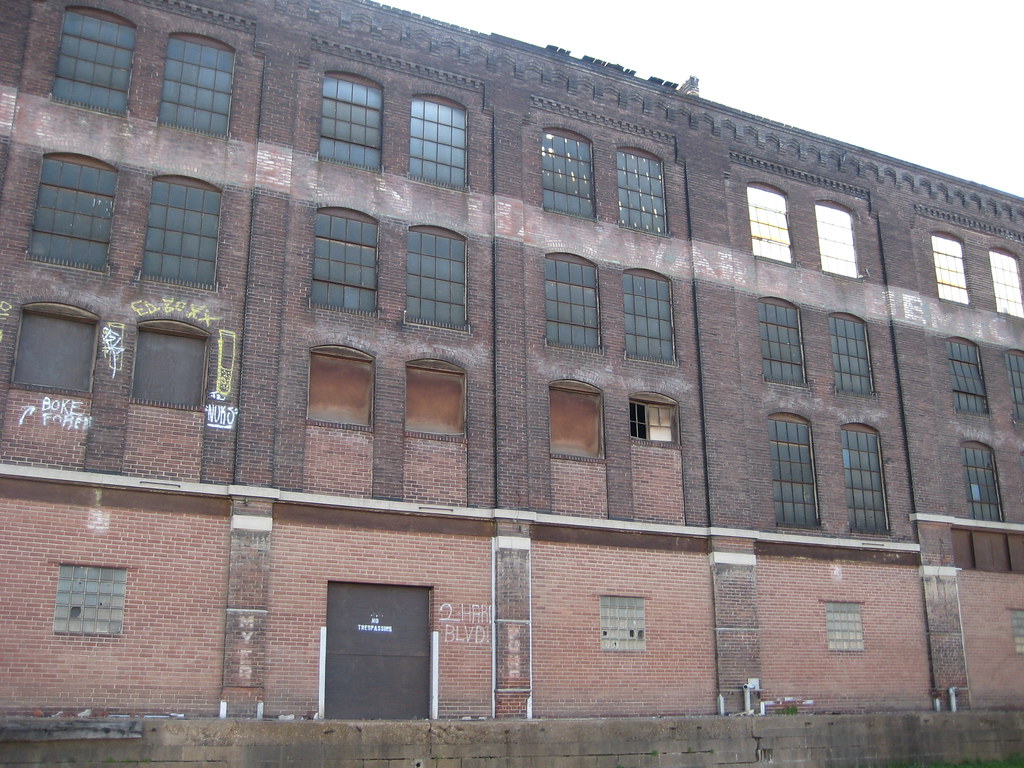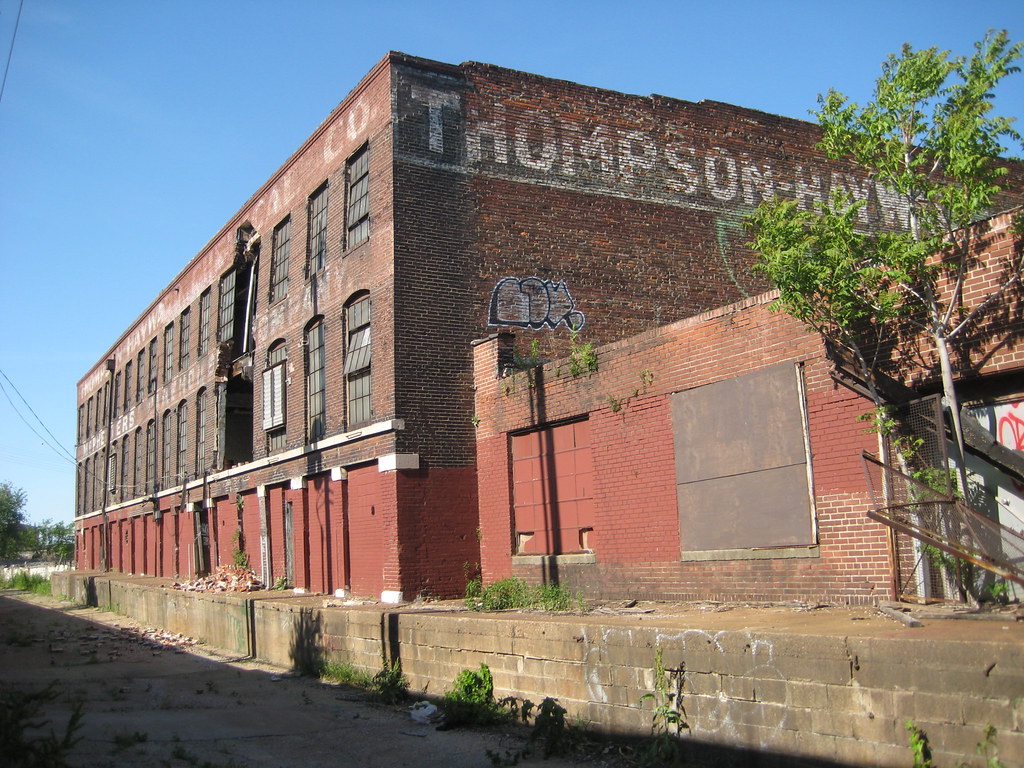 Since 1883 the demure Italianate mansion at 3740 Lindell Boulevard has stood witnessing the transformation of Lindell from Grand to Kingshighway from a tree-lined boulevard of grand homes of St. Louis' most notable residents to an eclectic mix of apartment buildings, hotels, various societies & religious institutions, businesses, as well the remaining mansions, which have been adapted for various uses.
Since 1883 the demure Italianate mansion at 3740 Lindell Boulevard has stood witnessing the transformation of Lindell from Grand to Kingshighway from a tree-lined boulevard of grand homes of St. Louis' most notable residents to an eclectic mix of apartment buildings, hotels, various societies & religious institutions, businesses, as well the remaining mansions, which have been adapted for various uses. Monday evening however, the St. Louis Preservation Board voted to allow SLU to demolish the mansion to make room for an expansion and re-styling of its law school. In what amounts to an arbitrary choice of style, SLU is saving the more grandiose turreted mansion to the east known as the "Queens Daughters" building and demolishing the more reserved mansion next door. The absence of strong preservation minded members John Burse and Michael Killeen left a 3 to 2 vote in favor of demolition. Those voting for demolition were: Mary "One" Johnson, Terry Kennedy and David Richardson. Barring an appeal of the decision, the 125 year old mansion will be demolished this summer.
Monday evening however, the St. Louis Preservation Board voted to allow SLU to demolish the mansion to make room for an expansion and re-styling of its law school. In what amounts to an arbitrary choice of style, SLU is saving the more grandiose turreted mansion to the east known as the "Queens Daughters" building and demolishing the more reserved mansion next door. The absence of strong preservation minded members John Burse and Michael Killeen left a 3 to 2 vote in favor of demolition. Those voting for demolition were: Mary "One" Johnson, Terry Kennedy and David Richardson. Barring an appeal of the decision, the 125 year old mansion will be demolished this summer.Also at Monday's meeting the board voted with the exact same 3-2 split to demolish the last full block of historic commercial warehouses on the St. Louis Riverfront. The three buildings, which are owned by the LCRA are located at 1101 N. Leonor K. Sullivan Blvd. (Wharf Street) between Biddle and Carr. A four story 1880's warehouse occupies the middle of the block with an older one story limestone cold storage building to the north and a two story warehouse to the south dating from the mid 1900's.
 The majority of St. Louis' riverfront warehouses were demolished in 1940 to make way for the arch grounds. While many historic buildings remain in both Laclede's Landing and Chouteau's Landing, none remain along the river fronting on Wharf Street. North of the doomed block both the Laclede Power Company and the remaining north half of a cold storage lie along Wharf Street, but their addresses are on Lewis to the west. The massive Ahsley Street Power Plant is east of Wharf Street, kitty corner to the three warehouses. Unfortunately the warehouses lie outside the North Riverfront Industrial Historic District which includes the buildings to the north.
The majority of St. Louis' riverfront warehouses were demolished in 1940 to make way for the arch grounds. While many historic buildings remain in both Laclede's Landing and Chouteau's Landing, none remain along the river fronting on Wharf Street. North of the doomed block both the Laclede Power Company and the remaining north half of a cold storage lie along Wharf Street, but their addresses are on Lewis to the west. The massive Ahsley Street Power Plant is east of Wharf Street, kitty corner to the three warehouses. Unfortunately the warehouses lie outside the North Riverfront Industrial Historic District which includes the buildings to the north.While the one story and four story warehouses have some deterioration issues, such as a section of missing roof and some localized collapse of one wall, they are far from unsalvageable. Monday, an official from LCRA insisted that their presence would impede phase 2 of Lumiere Place, which calls for several residential buildings, with some retail space. The funny thing about this is that according to an article in the December 28, 2007 issue of the Business Journal, the LCRA had put out an RFP for rehabilitation of the three warehouses that was due on January 25th.
 Once they did not receive any submittals, which is not too surprising given current economic conditions and the relative isolation away from re-developed properties, the LCRA suddenly deemed the buildings as in the way of development. However site plans and models that have been presented by Lumiere show the phase 2 development ending at Carr, south of the warehouses. Pinnacle has committed to $50 million in residential development. What they have shown south of Carr would easily satisfy this requirement. There have been no plans released for a phase 3 north of Carr... lets face it Pinnacle is a casino developer, not a residential developer. If these warehouses are indeed demolished, I predict that the site will remain a vacant gravel lot for up to a decade or more like the nearby Fresh Building which burned and it's remaining portion carelessly demolished in 2001.
Once they did not receive any submittals, which is not too surprising given current economic conditions and the relative isolation away from re-developed properties, the LCRA suddenly deemed the buildings as in the way of development. However site plans and models that have been presented by Lumiere show the phase 2 development ending at Carr, south of the warehouses. Pinnacle has committed to $50 million in residential development. What they have shown south of Carr would easily satisfy this requirement. There have been no plans released for a phase 3 north of Carr... lets face it Pinnacle is a casino developer, not a residential developer. If these warehouses are indeed demolished, I predict that the site will remain a vacant gravel lot for up to a decade or more like the nearby Fresh Building which burned and it's remaining portion carelessly demolished in 2001.

5 comments:
I haven't lived in the St. Louis area in over 20 years, but I find this appalling. It just reinforces my already low opinion of the majority of developers.
more senseless losses. Soon, St. Louis city will become the shapeless and cheap suburbs. St. Louis... we're a great city of the 19th century and so proud of our history and architecture heritage, so let's get busy tearing it all down to make room for Walgreen's. There is no acceptable excuse for this.
There needs to be a stronger voice against SLU, not sure how to go about doing that though.... also I thought Cassily was looking to buy that North riverfront property?
I don't have a huge problem with the SLU demolition, even though I love that house. The law school expansion is much-needed and will really be a great addition to the school. I wonder if they considered incorporating it into the expansion as they did with the Queen's Daughters building.
The demolition on the Landing really seems senseless to me. The buildings are so close to the new casino, and there are no plans for redevelopment of the site. It's discouraging to go down there and see Mississippi Nights and other small buildings gone.
Taylor (1997) explained how railway transportation impacted the great city of Saint Louis (Missouri). The city is situated on the Mississippi River, and other rivers connect to it here. Prior to the 1850’s, it was a key hub for trading, as it was a natural point for moving shipment. With the rise of the railway it lost its power to Chicago (Illinois):
“St. Louis was thriving. Its levees received more than four times as much wheat and flour as Chicago; its population doubled by the decade. St. Louis was
content with the steamboat. It saw no reason to bet all on the iron horse (…) [Chicago politician] Stephen A. Douglas, guided a land-grant bill through Congress to help build the Illinois Central. In 1852, the railroad reached they
city. Its population tripled in 10 years. (…) Chicago had become the leading railroad center in the West. Its strong terminal facilities and low rail rates
attracted manufacturers throughout the region. From 1860 to 1910, industrial employment in Chicago increased from 5,400 workers to more than 325,000.
(…) Belatedly, St. Louis and Missouri fought back by supporting several railroads. But the spectacular success of Chicago left Eastern investors reluctant
to put up money for Missouri rails;(…) Lacking money, the railroads were poorly built and poorly maintained. Four lines defaulted in 1860, and work halted on most of the others. Too little, too late: St. Louis never recovered”
(Taylor, 1997. p. 207-208)
St. Louis was called at those times the “New York of the West”...
I think the problem was that policy makers did not see coming a new techno-economic paradigm (train).
(This text is based on a paper I wrote, I thought you might find it interesting. I wonder how many times our political leaders can't see what is coming) Thanks for the postcard picture I'll use it for a powerpoint presentation I have to do.
Post a Comment